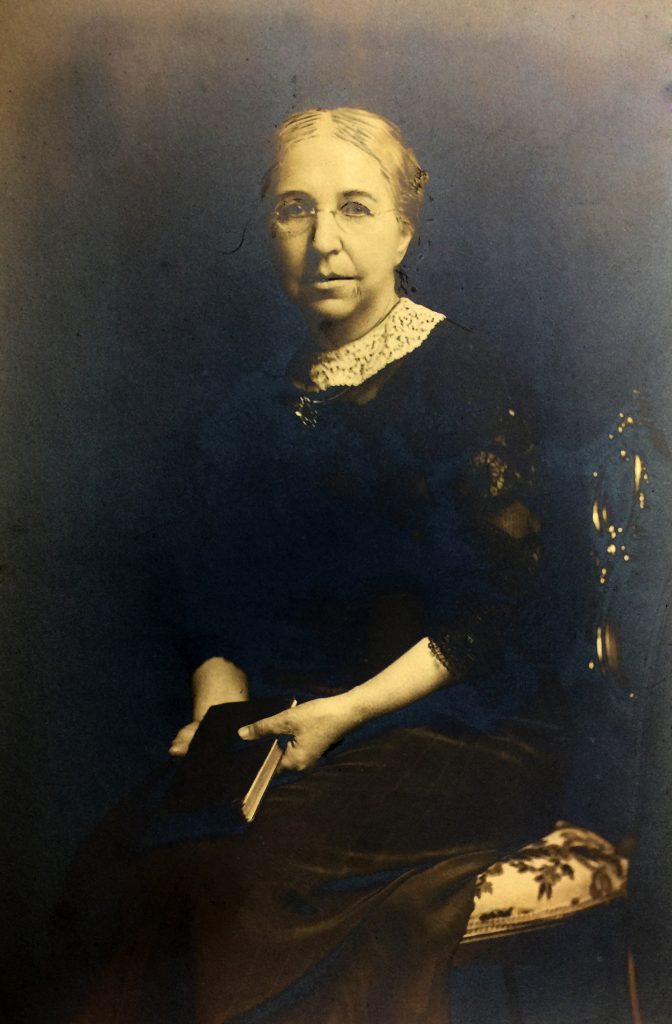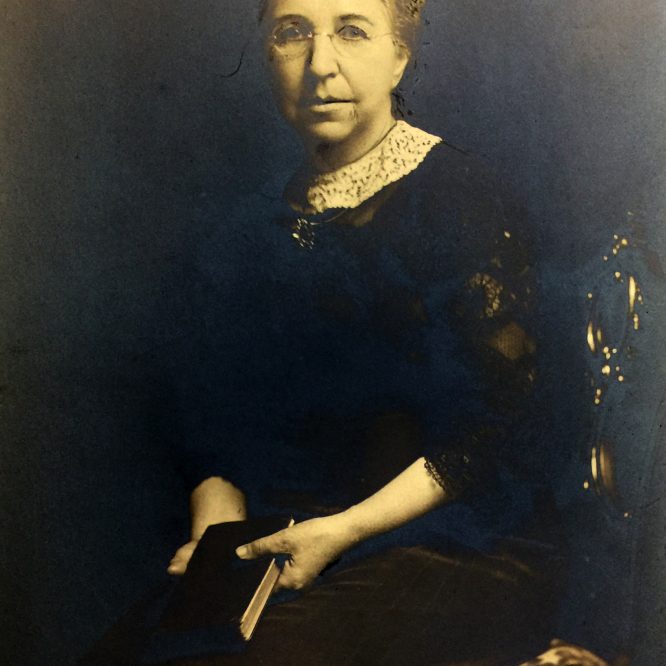
Vol. 5, No. 31
Last weekend’s tour of Mt. Albion Cemetery focused on notable “movers and shakers” from Orleans County, including Dr. Elizabeth Denio. Elizabeth Harriet Denio was born to John and Celinda Weatherwax Denio on August 3, 1842 at the family’s farm in Albion, now part of the Correctional Facility. A printer by trade, John Denio became a respected citizen of Albion due in part to his time as publisher of the Orleans American. As a young girl, Elizabeth attended the local schools but as the daughter of a prominent family, she was afforded the opportunity to attend the Phipps Union Seminary. Upon the completion of her education there, she later attended and graduated from Mount Holyoke College in 1866, followed by a very brief term as an instructor at Vassar College in Poughkeepsie, NY.
In 1876 she became a professor of German and Art History at Wellesley College until taking a leave of absence in 1883 to travel abroad. While in Germany, she commenced study at Leipzig, Berlin, and Heidelberg, focusing on German philology (language) and art history. In 1896 she was fired from Wellesley College due to her antiquated teaching style after the arrival of the institution’s new president. It was nearly two years later in 1898 that she received her Doctor of Philosophy from Heidelberg, writing her thesis entitled “The Life and Works of Nicolas Poussin.” This defining piece on the French Baroque artist was printed in 1899 by Charles Scribner and Sons of New York.
Upon her return to the United States, she was appointed to a position as a lecturer of art history at the University of Rochester in 1902. This appointment marked a significant milestone in the University’s history as Denio became the first female member of the institution’s faculty. In his 1910 report, University President Benjamin Rush Rhees noted that “Dr. Denio’s work has been elected increasingly by our students…there are few persons in the country so well equipped to do this work, and it is work which it is very advantageous for our women to take;” this also came with a promotion to the title of “Instructor in the History of Art.” In the earliest years of her tenure at the University, a lack of funding required for a permanent position forced the institution to hire her on an annual appointment by special action. Emily Sibley Watson, the daughter of Western Union founder Hiram Sibley, was largely responsible for funding Denio’s remuneration in those early years. After her retirement in 1917, she was made an Emeritus Professor.
On December 23, 1922, Dr. Denio prepared to cross from the south curb of East Avenue at Meigs Street Rochester when she was struck by a car driven by Theodore Drescher. In an effort to avoid the elderly woman, Drescher slammed on his brakes forcing the car to spin out of control and striking Denio with the rear of the vehicle. After she was knocked to the ground, a vehicle driven by Charles Flint passed over Denio’s body. She was quickly rushed to the Homeopathic Hospital where she later succumbed to her injuries. As noted by Bill Lattin (Bethinking of Old Orleans v. 16, no. 10), “Dr. Denio was known to be a stimulating conversationalist who had a broad spectrum of friends. Local lore conjectures that she became accustomed to men’s clothing while studying in Germany, for upon her return to this country, she was seen to appear in pants and supposedly enjoyed cigars. Denio’s lasting legacy remains in the form of the Memorial Art Gallery, an institution that she was influential in developing in 1913.”
The tour of Mt. Albion Cemetery this Sunday, August 11th, will feature Orleans County’s wealthiest, most famous, and eccentric residents. Gathering at the chapel, the group will depart at 6:05pm for a walk through the west section of the cemetery.
